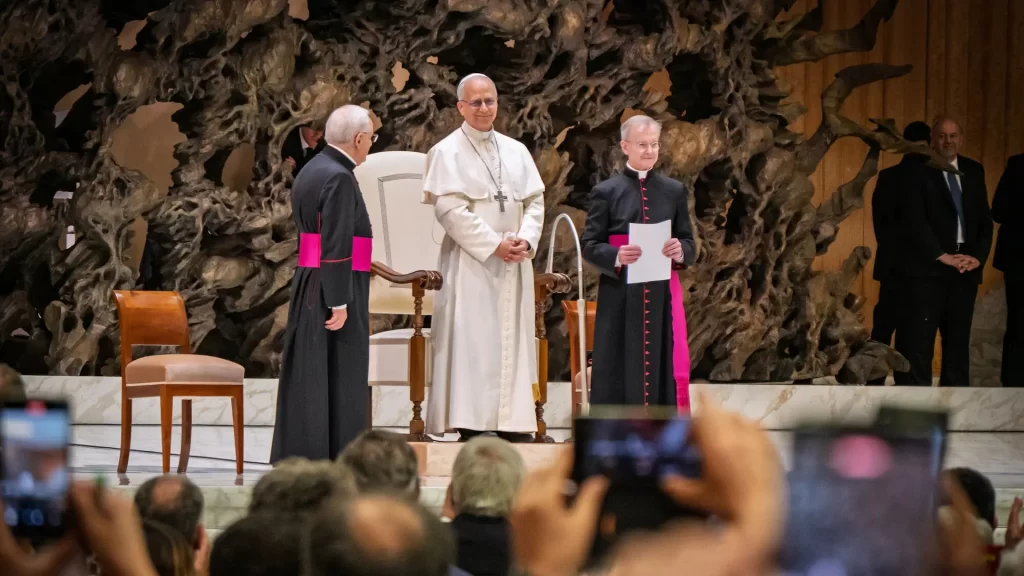In September, the six Conference Presidents gathered in Rome for their annual meeting with Fr General. Although we came from very different parts of the world, we could experience much in common in our roles of service to the Society’s global mission.
As Conference Presidents, we represent assemblies of Provincials in geographic areas – Europe, Africa and Madagascar, Latin America South Asia, USA and Asia Pacific – leading them in international engagement in mission. These Conferences may be seen as a clear response to Fr Pedro Arrupe’s call to transnational cooperation at GC31 to “break down the walls between the Provinces”.
That the Conferences have so much in common may be surprising, given the differing ways and cultural settings in which each has developed historically. In North America, for example, at least until GC35, the President has been like an executive officer, accountable to a board of Provincials. In Europe, which has reduced in overall numbers by 50% over the past 25 years, the President works within a complex reality with 27 Provinces and three assistancies, and must dance between very different worlds, some more flexible than others. The Asia Pacific Conference, which makes decisions by consensus following our cultural practice, comprises seven Provinces and six Regions and covers the most populous and diverse set of countries. It has to grapple with great unevenness in capacity and make-up – some Provinces are well established, but some Regions and even Provinces are desperately in need of outside help, setting a precedent for intervention by the Conference.
The Rome meeting took place against the backdrop of the Society’s “restructuring” discussions. GC35 had requested reconsideration of the governance arrangements that support our universal mission, and last September, Fr General established this as a Conference discernment led by the Presidents. We are asked to think beyond Provinces, to see the Province as a doorway to the universal mission given to us. “Conferences are structures oriented for mission and not mere instruments of inter-provincial coordination.” (GC35, D5, 17a).
In meeting with the Presidents, Fr Nicolás reiterated major points he had raised in the address “de statu Societatis” (On the current state of the Society), given this year at the Procurators’ Congregation, leading to discussion of our experiences in each part of the world. The areas discussed included:
- Life in the Spirit” and on how we might enhance our resources for depth, apostolic dynamism, discernment and service of the poor.
- Community life in the Society should be seen in the light of “community as mission”, that is, how we live and share our evangelical commitment should give people at least a glimpse of what the Gospel means. As the relationship of superior and head of ministry is being re-worked, more emphasis is put on how the Society is linked to the ministries in which community members are engaged. Fr General indicated that the role of the superior is to help people to think, to understand better their mission, pointing to the need for Jesuits, especially those likely to be superiors or ministry heads, to develop leadership and management skills.
- Vocation promotion and how the presentation of dynamic apostolates in which there is creativity, imagination and a strong commitment to evangelization will help attract more young people to join the mission.
- Ignatian Spirituality and the preparation of the next generation of experts on Ignatian Spirituality in a global network of Jesuit academic programmes in spirituality.
- Fr Nicolás also repeated his messages concerning the Year of Faith, noting that the Society, despite its mission of service of the faith, is not unaffected by the “profound crisis of faith” to which Pope Benedict XVI has referred. He explained that, in order to help the Society renew its service of this essential dimension of our mission, he has established the Secretariat for the Service of Faith.
Working in over 120 countries and in many languages presents the Society with challenges in communications, planning and change in our service of the universal mission. The Conferences are a relatively new feature of Jesuit governance set up to address these challenges and ensure that the Society remains oriented towards mission. By building networks and implementing common initiatives, the Conferences support Jesuits and companions as they identify and respond to the needs of our times, encouraging a view of mission beyond their Province or Region.
Mark Raper SJ
October 30, 2012






